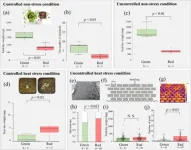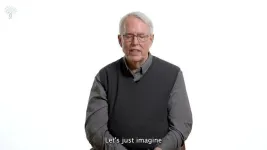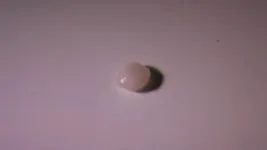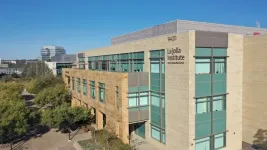(Press-News.org) Since 2011, California has significantly reformed its criminal justice system, reducing the size of its prison population, with no effect on violent crime and only marginal impacts on property crime statewide. The COVID-19 pandemic furthered decarceration as the state reduced state prison and jail populations to slow the spread of the virus. Concerns emerged that releases under the auspices of COVID mitigation harmed public safety. A new study explored this notion and found no consistent relation between COVID-19-related jail decarceration and violent or property crime at the county level in the state.
The study, by researchers at the University of California (UC) Irvine and the University of Arizona, is published in the Journal of Contemporary Criminal Justice. Their work is promoted by the Crime and Justice Research Alliance, which is funded by the National Criminal Justice Association.
“California’s efforts to reduce overcrowding as a way to limit the spread of COVID-19 reduced the correctional population more severely and abruptly than any of the state’s previous decarceration reforms,” according to Charis E. Kubrin, professor of criminology, law, and society at UC Irvine, who led the study. “Concerns about what impact these actions would have on crime rates were widespread, and although violent and property crime in large cities declined during the pandemic, homicide and car theft rose significantly.”
Because these increases mirrored national trends, it was unclear whether California’s pandemic-related decarceration efforts were responsible. In this study, researchers sought to determine whether COVID-19 jail downsizing measures were related to crime trends in the state, estimating the effect of the measure on crime in the state’s 58 counties and isolating the impact of decarceration on crime from other shocks affecting the state as a whole. They examined monthly average daily jail population counts from January 2013 to December 2021, and county-level monthly crime data during the same period; COVID-19 decarceration occurred from January through December 2020.
The study did not find a consistent relation between COVID-19 jail decarceration and crime at the county level, suggesting that downsizing, on average, did not drive crime increases statewide.
Among the study’s limitations, the authors note that because they used a synthetic control adaptation, the treated and synthetic series did not reflect the fully treated and completely untreated versions of county crime rates that are generally produced via synthetic controls. The authors also note they measured COVID-19 mitigation efforts only from March through December 2020—a relatively short period—in order to minimize the effects of crime associated with summer 2020 protests following the murders of Breonna Taylor, George Floyd, Jacob Blake, and others.
“These limitations reveal how challenging it is to identify decarceration’s potential effect from any one factor during one of the most dynamic and challenging periods the state, as well as the country as a whole, experienced,” notes Bradley J. Bartos, assistant professor of government and public policy at the University of Arizona, who coauthored the study. “Nonetheless, our findings offer insights that can inform future criminal justice innovations.”
END
COVID-19-related jail decarceration did not affect crime in California
2023-10-20
ELSE PRESS RELEASES FROM THIS DATE:
Challenging prehistoric gender roles: Research finds that women were hunters, too
2023-10-20
It’s a familiar story to many of us: In prehistoric times, men were hunters and women were gatherers. Women were not physically capable of hunting because their anatomy was different from men. And because men were hunters, they drove human evolution.
But that story’s not true, according to research by University of Delaware anthropology professor Sarah Lacy, which was recently published in Scientific American and in two papers in the journal American Anthropologist.
Lacy and her colleague Cara Ocobock from the University of Notre Dame examined the division of labor according to sex during the Paleolithic era, approximately 2.5 million to 12,000 ...
Felix Parra Diaz elected a fellow of the American Physical Society
2023-10-20
Felix Parra Diaz, the head of the Theory Department at the U.S. Department of Energy’s (DOE) Princeton Plasma Physics Laboratory (PPPL), has been elected a 2023 Fellow of the American Physical Society (APS). This honor recognizes scientists who have helped advance physics by contributing original research, showing how to apply physics to the worlds of science and technology, or exhibiting excellence in physics teaching.
Parra Diaz was cited for “transformational contributions to the theory ...
ESMO Manifesto - Translating scientific evidence into effective public health policy
2023-10-20
ESMO announces Public Policy Manifesto on key issues for oncology to bring to European institutions after 2024 elections.
Studies presented at the ESMO Congress 2023 set new standards of care across a wide range of tumour types.
Madrid, Spain, 20 October 2023 – Evidence is building up that strong political action has the potential to tackle two of our era’s biggest challenges: climate change and the increasing burden of cancer on society. At the opening press conference of the ESMO Congress 2023 taking place 20-24 October in Madrid, Spain, a slew of studies marking meaningful ...
Massachusetts Life Sciences Center awards $4.3 million to MBL to support imaging innovation
2023-10-20
WOODS HOLE, Mass.—The Massachusetts Life Sciences Center (MLSC) has awarded $4.3 million to the Marine Biological Laboratory (MBL) to expand its imaging capabilities to serve the Massachusetts life sciences community.
The grant, which will be used to procure two state-of-the art microscopes capable of increased resolution and advanced technology, such as milling for the reconstruction of samples in 3D, was announced at a press conference on October 18 at the grand opening of a new incubator, the Massachusetts Biomedical Initiatives (MBI).
MBL Director of Research Anne Sylvester ...
Does urbanization trigger plant evolution?
2023-10-20
Urbanization and human activities have transformed a significant proportion of the land on Earth, resulting in the formation of urban environments. These urban environments are man-made habitats that often impose several selective pressures on their inhabitants. A key characteristic of such environments is the presence of impermeable, heat-retaining surfaces created using brick, stone, asphalt, and concrete. Notably, these surfaces form urban heat islands, i.e., regions with elevated surface temperatures. An unexpected result of heat stress ...
Why do some men not produce sperm?
2023-10-20
KANSAS CITY, MO—October 20, 2023—Millions of couples worldwide experience infertility with half of the cases originating in men. For 10% of infertile males, little or no sperm are produced. Now, new research from the Stowers Institute for Medical Research, in collaboration with the Wellcome Centre for Cell Biology at the University of Edinburgh, is shedding light on what may be going wrong in the process of sperm formation, leading to potential theories on possible treatments.
“A ...
Harsh workplace climate is pushing women out of academia
2023-10-20
Women faculty are more likely to leave academia than men faculty throughout all career stages in U.S. universities, University of Colorado Boulder researchers revealed in the most comprehensive analysis of retention in academia to date.
The team published the findings Oct. 20 in the journal “Science Advances.” The researchers found that a harsh workplace climate, which can include harassment and feelings of not belonging, was the most common reason women left academia. This attrition affects not only early-career professionals, ...
Dingoes given ‘almost-human’ status in pre-colonial Australia
2023-10-20
It's said that a dog is a man’s best friend, but the wild dingo is much maligned in Australia. This may not always have been the case though, with new research led by experts at The Australian National University and The University of Western Australia suggesting that dingoes were buried – and even domesticated – by First Nations people prior to European colonisation.
The researchers examined remains at the Curracurrang archaeological site, south of Sydney, where radiocarbon dating of dingo bones revealed the animals were buried alongside humans as far back as 2,000 years ago.
The care taken to bury the animals ...
Soft, living materials made with algae glow under stress
2023-10-20
A team of researchers led by the University of California San Diego has developed soft yet durable materials that glow in response to mechanical stress, such as compression, stretching or twisting. The materials derive their luminescence from single-celled algae known as dinoflagellates.
The work, inspired by the bioluminescent waves observed during red tide events at San Diego’s beaches, was published Oct. 20 in Science Advances.
“An exciting feature of these materials is their inherent simplicity—they need no electronics, no external ...
Army of specialized T cells may trigger asthma attacks in older men
2023-10-20
LA JOLLA, CA—Scientists from La Jolla Institute for Immunology (LJI) and The University of Southampton, UK, have uncovered a group of immune cells that may drive severe asthma. These cells, called cytotoxic CD4+ tissue-resident memory T cells, gather in the lungs and appear to possess the molecular weaponry to cause the most harm in men who developed asthma later in life.
"If you are male and you develop asthma after age 40, there's a high chance this T cell population is in your lungs," says LJI Research Assistant Professor Gregory Seumois, Ph.D., who co-led the study with LJI Professor Pandurangan ...





